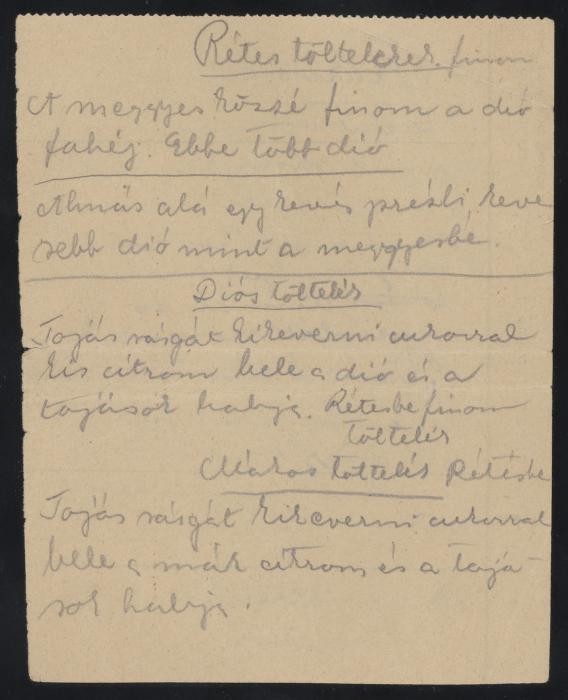
Ilona Kellner and her family lived in Pelsöc, which became part of Hungary before World War II. Following the German occupation of Hungary, Ilona, her sister Vera, and her parents Karoly and Jolan were forced into a ghetto in another area of the town. In mid-June, the family was deported to the Auschwitz camp in German-occupied Poland. Ilona's parents were killed in the gas chambers at Birkenau.
In early August, Ilona and her sister were deported to Hessisch Lichtenau, a subcamp of the Buchenwald concentration camp. They were part of a transport of 1,000 Hungarian women taken to Germany to fill a labor shortage. At the labor camp, Ilona worked as a translator and messenger and tidied the factory there. She smuggled blank pages out of wastebaskets and used them to record hundreds of recipes dictated by her fellow women prisoners, along with some of her own recipes.
This page shows Ilona Kellner's recipe for various strudel fillings, written on the back of a blank munitions factory form.
What might have motivated people in camps and ghettos to collect and preserve recipes and create cookbooks under such difficult conditions?
How do objects and images enhance our understanding of the events of the Holocaust?
What questions does this document raise for you?
We would like to thank Crown Family Philanthropies, Abe and Ida Cooper Foundation, the Claims Conference, EVZ, and BMF for supporting the ongoing work to create content and resources for the Holocaust Encyclopedia. View the list of donor acknowledgement.